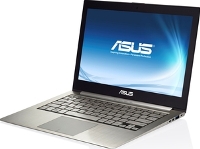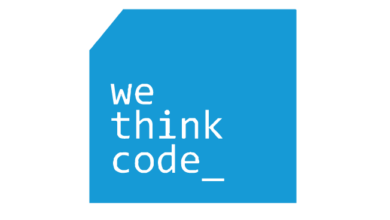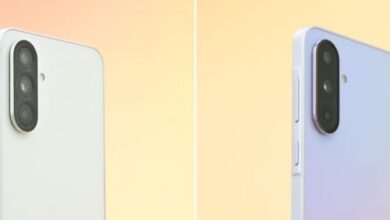10 gadgets to look out for in 2012

1. Amazon Kindle Fire

You might wonder what this is doing at the top of our list when it’s quite clearly already out – heck, we’ve even already got an Amazon Kindle Fire review on TechRadar. But it’s only out in the USA so far, so for the UK and the rest of the world, it remains a gadget for 2012.
So what’s got us so excited about the Kindle Fire? Our review called it “a brilliant media consumption device that doesn’t break the bank”, making it “perhaps the best gadget bargain of this era”.
We’ll be interested to see what video streaming options and other content it launches with outside of the US and it’ll be fascinating to see if it spurs tablet adoption with its relatively tiny price.
2. Wii U

There’s no doubt the Wii sparked a motion-control revolution when it launched, with all three major consoles now sporting some sort of wavy-arm option. However, despite phenomenal sales for much of its life, it isn’t still banging out the hit games in the way the Xbox and PS3 are.
Enter the Wii U, then. The Wii’s successor looks set to be a powerful HD console, offering 1080p output and 3D support, with yet another interesting new controller. The Wii U comes with a kind of small tablet – a controller with all the usual buttons, but a touch screen in the middle as well. The touch screen can be used to control games, or you can actually play the game on that screen, leaving your TV free for Masterchef.
Nintendo-quality games, awesome HD graphics, support from lots of third-party games developers, and a handy way to play in any room in your house? Count us in.
3. Asus Eee Pad Transformer Prime

This is where tablets really start to grow up when it comes to horsepower. The Asus Eee Pad Transformer Prime is the first Nvidia Tegra 3 tablet, which means quad-core processing and amazing graphics performance for a portable device. Somehow, it’s also unbelievably thin and light, and comes in a bundle with keyboard dock for typing on the go.
Our Eee Pad Transformer Prime review found that it had good battery life, a great screen and amazing performance, especially for games. It’s probably going to be just the first step in what’s to come for Tegra 3 tablets in 2012, but it’ll be a hell of a way to start the year when it’s released in January.
4. Windows 8 tablets

There are still a lot of unanswered questions when it comes to Windows 8 tablets, but the information is starting to come out, and there’s no doubt Microsoft is prepared to make a real go of this tablet malarkey.
Windows 8 will use a Metro interface that’s much like Windows Phone 7 for when it’s used on touch devices, with separate Metro apps. It will support ARM processors, such as Tegra 3, as well, which means manufacturers have options for the hardware they include.
Whether the addition of a new touch interface on top of the traditional Windows look will entice developers and customers is hard to say, but it seems to have the manufacturers on board, and we’ll be able to see more when the public beta arrives early next year. If Microsoft pulls it off, it may suddenly become a big mobile player again.
5. Apple’s 2012 tablet

We could fill this article with what Apple’s supposedly got in the works for next year, but since they’re all officially fictional until the moment Tim Cook walks on stage and reveals them to the world, let’s not get too wrapped up in them. Rumours of an iPad 3 with a Retina display are stronger than ever, and it’s fair to say that we’d be drooling all over a tablet with a screen as highly detailed as the iPhone 4S’s.
iPhone 5 rumours persist too, though at this point we suspect it’ll be called something else, since it won’t be the fifth iPhone. A thinner design with a larger, possibly edge-to-edge, screen is supposedly the order of the day, which will be unusual, but we’d love to see if Apple can pull it off.
And then there’s the Apple TV. No, not the Apple TV you can buy now, the new Apple iTV television set that’s supposed to be in the works. Of course, it’s hard to say how good an Apple TV would be from a visual point of view, but we like the sound of a TV with Airplay and iCloud built in, with Siri functionality as a remote control option.
6. PlayStation Vita

In the face of the casual gaming revolution from the DS and App Store, Sony has stuck to what it knows, and its latest handheld is going to be a beast of a machine when it comes to raw power. And that pleases us greatly.
The Vita packs a quad-core graphics processor, making even the impressive graphics in the iPad 2 [link] look small-time in comparison. The graphics can shine on the qHD screen, and there are touch controls as well as dual analogue sticks, to keep both hardcore gamers and the Angry Birds crowd happy. With amazing-looking versions of Sony’s games, including a new uncharted offering, coming, the Vita is definitely a gamer’s device, and potentially an awesome one at that.
7. Asus Padfone

The Asus Padfone raised quite a few eyebrows when it was announced at Computex, as much for the odd presentation as the unusual device itself. A phone that you can slot in a tablet shell to give yourself a larger device seems to come firmly under ‘just crazy enough to be crazy’, but as time goes on, it’s started to make more sense.
What’s got us really interested now is the news that not only will the Padfone come with Android 4.0, but with Nvidia’s Tegra 3 quad-core CPU as well. Android 4.0 makes perfect sense for the device; it’s designed to unify the tablet and phone versions of Android, just as Asus is trying mash the two physical devices together. But with a launch planned for Mobile World Congress, we could be about to see the first quad-core phone released, and that’s really going to make things interesting.
8. Sony PlayStation 3D Display

3D is still somewhat stumbling towards mainstream relevance, with more and more new TVs integrating it, but the PS3 can do 3D games and 3D Blu-ray playback, so Sony’s making it simple to watch 3D without having to replace your entire home cinema setup. The PlayStation 3D Display can also cleverly use its 3D abilities to display two different images to two different players if you’re playing multiplayer, as an alternative to split-screen gaming.
As a relatively low-cost (compared to big home cinema displays) 3D screen that’s not too big, but features some cutting-edge 3D technology, Sony’s display ticks all the boxes. It’s a brilliant way to get into 3D gaming without totally breaking the bank, and is great for bedroom gaming or a second screen beyond your main TV.
9. Android 4.0 tablets

You might wonder what Android 4.0 actually brings that Android 3.2 doesn’t offer now, but the answer isn’t as simple as a list of better features. In our Android 4.0 review, we found that the big steps forward is in the little things. It’s much more streamlined, and more easy to use, and that’s vital for making it seem as appealing as the iPad to those who don’t care about hardware specs.
But more than that, we want to see what it inspires in the tablet manufacturers. We see all sorts of different app choices, custom widgets, hardware differences and philosophies from the different companies making Android tablets, and we can’t wait to see what Ice Cream Sandwich brings out of them.
10. Ultrabooks that get it right

With Intel’s push to make Ultrabooks – MacBook Air-like ultrathin laptops with speedy SSDs – the next big thing, we’re seeing many of the big companies come out with their attempts. Some of them have been very good, but there’s always a niggling problem making them imperfect, such as keyboards that are too small and uncomfortable, or dodgy track pads.
No company has nailed it yet, but we’re sure that one will next year, and that’s what we’re excited for: a super-thin, super-light PC that offers all the quality of the best normal laptops, but without the weight and size. Someone will get it right soon, and that will be a hell of a laptop.




